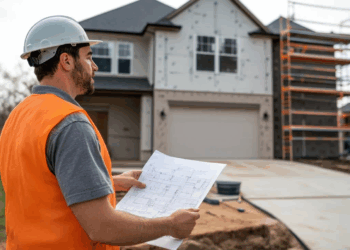
Delving into Signs It’s Time to Replace Your Roof or Siding, this introductory passage aims to intrigue readers with valuable insights on recognizing when these crucial home elements need attention.
Providing detailed explanations and examples, the following section sheds light on the key indicators for roof and siding replacement.
Signs It’s Time to Replace Your Roof or Siding
When it comes to the exterior of your home, the roof and siding play crucial roles in protecting your property from the elements. Over time, wear and tear can take a toll on these essential components, leading to the need for replacement.
Recognizing the signs that it's time to replace your roof or siding can help you avoid costly damage and maintain the structural integrity of your home.
Signs Your Roof Needs Replacement
- Leaks or water stains on the ceiling
- Missing, cracked, or curling shingles
- Sagging or uneven roof deck
- Excessive granule loss in gutters
- Mold or rot on the roof
Identifying Signs for Siding Replacement
- Cracks, chips, or holes in the siding
- Fading or peeling paint on the siding
- Warped or buckling siding panels
- Mold or mildew growth on the siding
- Insect infestations or woodpecker damage
Importance of Timely Replacement
Timely replacement of your roof and siding is crucial to prevent further damage to your home. Ignoring signs of deterioration can lead to water infiltration, mold growth, structural issues, and decreased energy efficiency. By addressing these issues promptly, you can protect your investment and ensure the safety and comfort of your family.
Roof Replacement Indicators
When it comes to knowing when it's time to replace your roof, there are several key indicators to look out for. From visible damage signs to the impact of old age and leaks, understanding these warning signals can help you make informed decisions about the maintenance of your home.
Visible Damage Signs
- Missing or damaged shingles: If you notice missing, cracked, curling, or buckling shingles, it's a clear sign that your roof needs attention.
- Sagging roof: A drooping or sagging roofline indicates structural issues that may require a full replacement.
- Granule loss: Finding an excessive amount of granules in your gutters or on the ground could mean your shingles are nearing the end of their lifespan.
Impact of Old Age
Old age can take a toll on your roof, causing it to deteriorate over time. As your roof ages, it becomes more susceptible to damage from the elements, leading to issues like leaks, mold growth, and reduced energy efficiency. The wear and tear from years of exposure to weather conditions can weaken the roof's integrity, making it less effective at protecting your home.
Leakage as a Critical Sign
Leakage is one of the most urgent signs that your roof needs to be replaced. A leaking roof can lead to water damage, mold growth, and structural issues within your home.
- Water stains on ceilings or walls: If you notice water stains or discoloration on your ceilings or walls, it's a clear indication of a roof leak.
- Dripping or pooling water: Finding water dripping or pooling inside your home during or after rainstorms is a sure sign that your roof is compromised.
- Visible signs of water damage: Warped or discolored areas on your ceiling, walls, or attic could be a result of a roof leak that needs immediate attention.
Siding Replacement Indicators
When it comes to the exterior of your home, the siding plays a crucial role in protecting the structure and enhancing its curb appeal. Over time, however, siding can deteriorate due to various factors, signaling the need for replacement. Here are some common indicators that it may be time to replace your siding:Exposure to the elements, age, and lack of maintenance can lead to cracks, warping, or discoloration in your siding.
These issues not only impact the visual appeal of your home but also compromise its insulation and protection from the elements.
Role of Mold or Mildew Growth
- Mold or mildew growth on your siding is a clear sign of moisture-related problems. This could indicate leaks, poor ventilation, or water seeping behind the siding, leading to potential structural damage.
- Ignoring mold or mildew growth can pose health risks to you and your family, making it essential to address the issue promptly by considering siding replacement.
Weather Damage Impact
- Severe weather conditions such as storms, hail, or strong winds can cause significant damage to your siding, including dents, cracks, or loosening.
- If your siding has been exposed to harsh weather elements and shows signs of damage, it's crucial to assess the extent of the issues and consider replacing the siding to maintain the integrity of your home.
Comparison: Roof vs. Siding Replacement
When it comes to deciding whether to replace your roof or siding, several factors need to be considered. Let's compare the cost implications, lifespan, and materials used in roof and siding replacement to help you make an informed decision.
Cost Implications
Replacing a roof tends to be more expensive than replacing siding. The cost of a new roof can vary depending on the size of your home, the materials used, and the complexity of the job. On the other hand, replacing siding is generally more cost-effective.
It is essential to budget for either replacement project and consider the long-term benefits and durability of each option.
Lifespan
Roofs typically have a shorter lifespan compared to siding. Asphalt shingle roofs, for example, may last around 20-30 years, while metal roofs can last 40-70 years. In contrast, siding materials like vinyl or fiber cement can last 30-50 years or more with proper maintenance.
Considering the lifespan of both components is crucial when deciding which one to replace first.
Materials Used
Different materials are used in roofing and siding replacement, each with its unique properties and benefits. Common roofing materials include asphalt shingles, metal, wood, and slate, each offering varying levels of durability and aesthetics. Siding materials range from vinyl, fiber cement, wood, aluminum, and stucco, providing different looks and maintenance requirements.
Understanding the characteristics of these materials can help you choose the best option for your home's exterior renovation needs.
Last Word

In conclusion, this discussion highlighted the importance of timely roof and siding replacement, ensuring the integrity and longevity of your home.
Commonly Asked Questions
What are some common signs that indicate the need for roof replacement?
Some common signs include missing shingles, water stains on the ceiling, and sagging areas on the roof.
How can you identify signs that siding needs to be replaced?
Look out for cracks, warping, or discoloration in the siding, as well as any mold or mildew growth.
What is the typical lifespan of roofs compared to that of siding?
Roofs generally last around 20-30 years, while siding can last anywhere from 20 to 40 years depending on the material.











